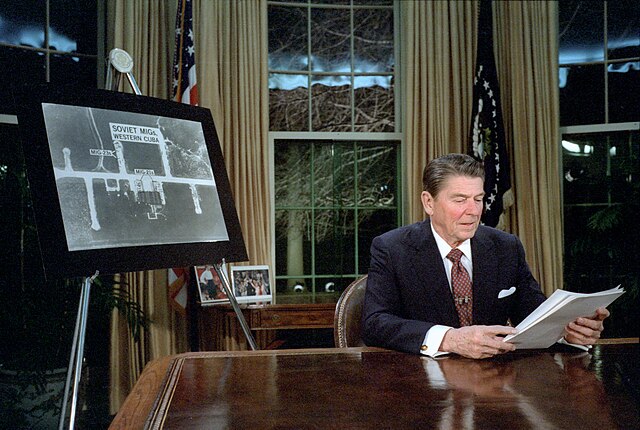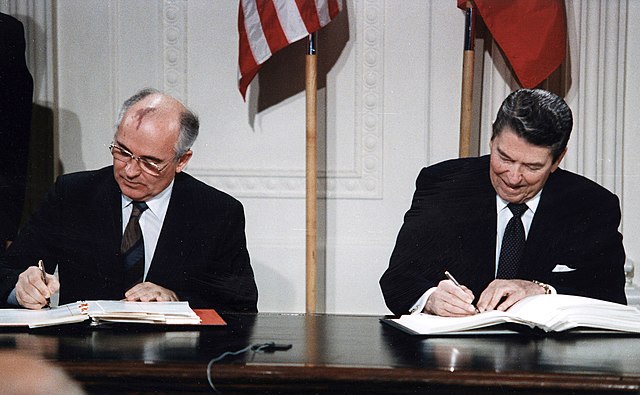Anti-Ballistic Missile Treaty
The Anti-Ballistic Missile Treaty, also known as the ABM Treaty or ABMT, was an arms control treaty between the United States and the Soviet Union on the limitation of the anti-ballistic missile (ABM) systems used in defending areas against ballistic missile-delivered nuclear weapons. It was intended to reduce pressures to build more nuclear weapons to maintain deterrence. Under the terms of the treaty, each party was limited to two ABM complexes, each of which was to be limited to 100 anti-ballistic missiles.
Launch of a U.S. Army Nike Zeus missile, the first ABM system to enter widespread testing
Jimmy Carter and Leonid Brezhnev signing SALT II treaty, 18 June 1979, in Vienna
President Reagan delivering the 23 March 1983 speech initiating SDI
Presidents Vladimir Putin and George W. Bush sign SORT on 24 May 2002 in Moscow.
Arms control is a term for international restrictions upon the development, production, stockpiling, proliferation and usage of small arms, conventional weapons, and weapons of mass destruction. Historically, arms control may apply to melee weapons before the invention of firearm. Arms control is typically exercised through the use of diplomacy which seeks to impose such limitations upon consenting participants through international treaties and agreements, although it may also comprise efforts by a nation or group of nations to enforce limitations upon a non-consenting country.
Soviet General Secretary Gorbachev and U.S. President Reagan signing the INF Treaty in 1987





